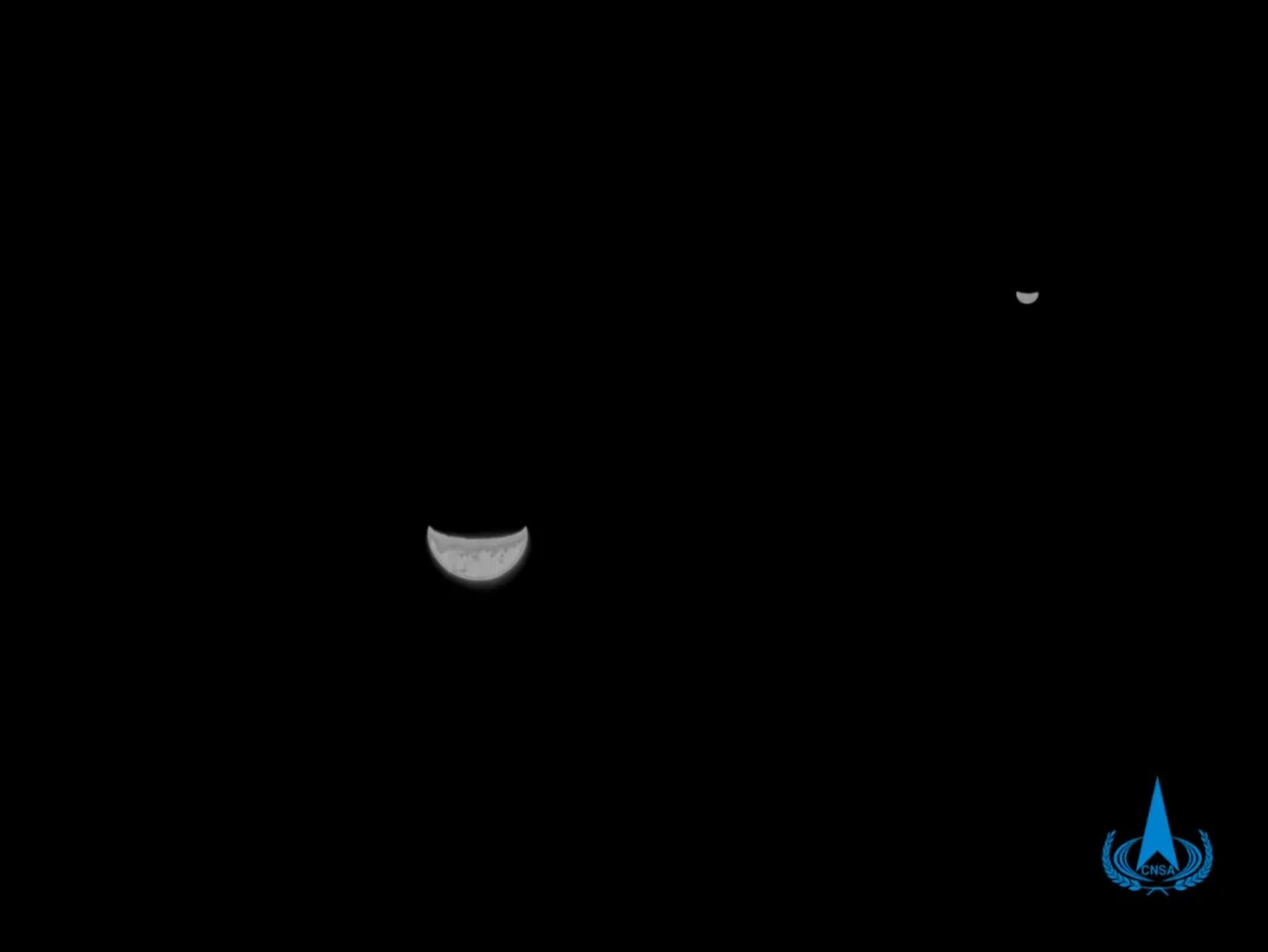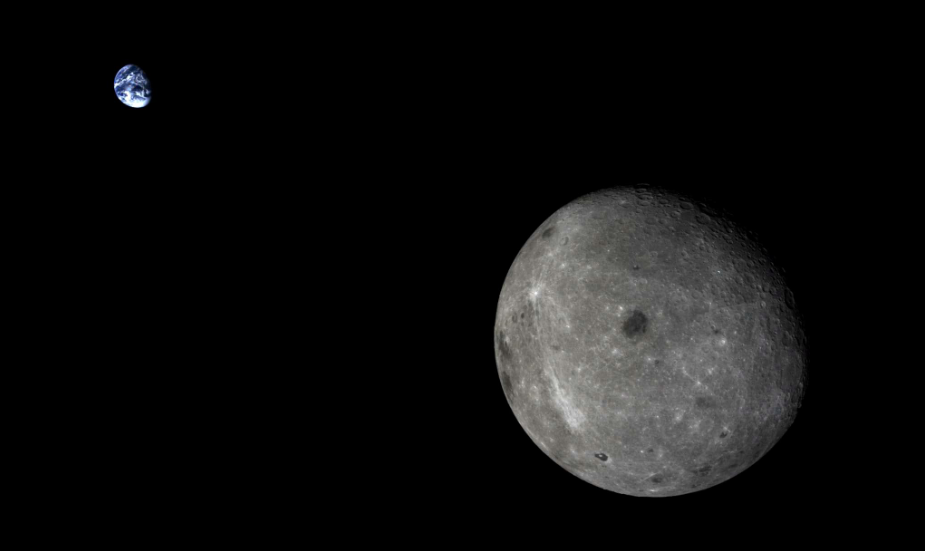On its way to Mars, Chinese spacecraft spots Earth and moon, aces steering maneuver

China's Tianwen-1 spacecraft captured a stunning view of the Earth and moon before making its first trajectory correction maneuver on the long journey to Mars.
The mission consists of an orbiter, entry vehicle and rover. The spacecraft will begin orbiting the Red Planet in February 2021, and then prepare for the rover's landing attempt, which is expected in April or May.
Tianwen-1 launched on July 23 on a Long March 5 rocket and completed the final burn to send it on a trajectory to Mars 36 minutes later. On July 27, while the spacecraft was about 750,000 miles (1.2 million kilometers) away from Earth, an optical navigation sensor imaged the crescent-shaped Earth and the smaller, more distant moon.
Related: NASA asteroid camera spots China's Tianwen-1 Mars spacecraft speeding away from Earth
The black-and-white image reveals a few apparent features of Earth, against the stark background of an otherwise vast, black ocean.
At 7:00 p.m. EDT (2300 GMT) on August 1, Tianwen-1 fired its engine for 20 seconds to optimize the spacecraft's trajectory. When the maneuver occured, Tianwen-1 was roughly 1,860,000 miles (3 million km) away from Earth after 230 hours of flight.
The burn was a vital test of the vehicle's propulsion system, which it will rely on to correct its trajectory and slow the spacecraft to allow it to enter Mars orbit.
Breaking space news, the latest updates on rocket launches, skywatching events and more!
The spacecraft will make four or five such adjustments before reaching Mars, Geng Yan, an official with the China National Space Administration, told Chinese media. The second such correction will be made before October.
Tianwen-1 is in good condition, communicating well with the ground, according to the update from the China Lunar Exploration Project.
The orbiter carries high- and medium-resolution cameras designed for studying and mapping Mars. The image of the Earth and moon, however, was taken by an optical navigation sensor that is normally pointing toward Mars.
In the days following launch, a NASA asteroid camera picked up the spacecraft moving against the star field.
Other Chinese spacecraft have imaged the Earth and moon together previously. Chang'e-5 T1, an experimental mission launched in 2014 to test lunar sample-return technologies, took a stunning image of the far side of the moon and a distant Earth.
The Queqiao relay satellite for the Chang'e-4 lunar far-side mission has also imaged the pair from the second Earth-moon Lagrange point beyond the moon, as did the Longjiang-2 microsatellite that launched with Queqiao. Fengyun-4A, a weather satellite in geostationary orbit, has also captured the pair in a single shot.
Tianwen-1, as well as the United Arab Emirates' Hope mission and NASA's Perseverance rover, are now all en route to Mars and will arrive in February.
Follow us on Twitter @Spacedotcom and on Facebook.

Andrew is a freelance space journalist with a focus on reporting on China's rapidly growing space sector. He began writing for Space.com in 2019 and writes for SpaceNews, IEEE Spectrum, National Geographic, Sky & Telescope, New Scientist and others. Andrew first caught the space bug when, as a youngster, he saw Voyager images of other worlds in our solar system for the first time. Away from space, Andrew enjoys trail running in the forests of Finland. You can follow him on Twitter @AJ_FI.

